Foreign Insulators
by Richard Wentzel
Reprinted from "Crown Jewels of the Wire", March 2003, page 15
What determines if an insulator should be classified as
foreign? Simply put, it's a matter of perspective -- global perspective. For
example, the insulators contained in the trucks shown below would not be
considered foreign by American collectors, but they would by Brazilian
collectors.
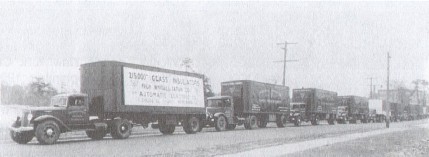
WHITALL TATUM Co.
215,000 Glass Insulators for Automatic Electric Co.
Chicago, Illinois to Rio De Janeiro, South America
The widely accepted definition of a foreign insulator is this: to a collector
in any given country, an insulator with its point of manufacture outside that
given country is considered foreign. If you are a strict adherent to this widely
accepted definition, you may find yourself at odds with this month's column.
Under certain circumstances, I believe the tried-and-true definition could use a
bit more flexibility. Read on if you're interested in seeing a few examples of
what I refer to as "foreign hybrid" insulators. My definition of a
foreign hybrid is an insulator specifically intended for use outside its country
of origin and unusable within its country of manufacture.
Throughout my
collecting career, I have frequently been surprised to find foreign insulators
mixed in among items that once graced the sample shelves at the Whitall
Tatum/Armstrong/Kerr glass factory in Millville, NJ. To date, insulators from
Greece, England, Canada and Mexico have been documented as prior residents of
the sample room. Some of these had been sectioned to reveal their inner profile.
(See top picture, next page) Others, like a CD 162 SM-2 identical to the one
pictured in the December 2002 issue of Crown Jewels, were intact and unused. Why
were these pieces in a New Jersey glass factory?
With the appearance of vital plant engineering and production documents over
time, an answer to this question slowly began to appear. As the Millville glass
makers reputation began expanding in insulator circles, they found themselves
being contacted by a variety of international concerns with regard to producing
items specifically intended for use outside of U. S. borders.
One of the
earliest requests of this nature came to Whitall Tatum's New York City office in
late September 1928. The Commonwealth of Australia sought prices for producing
two styles of insulators (as shown below and next page).
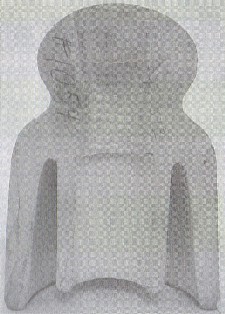
When these drawings
were shown to plant engineers in Millville, they immediately took exception with
the thread cavity. From a letter dated Sept. 25, 1928:
"If the consumer of
these insulators could be persuaded to adopt the conventional form of screw
thread used by the W. U. Tel. Co., W. E. CO., [Western Electric] A. T. & T.
Co. and the various other users in the U. S. they would be getting a much
stronger thread section, there is some question as to how a Vee thread of such
small pitch is going to stand up in glass..."
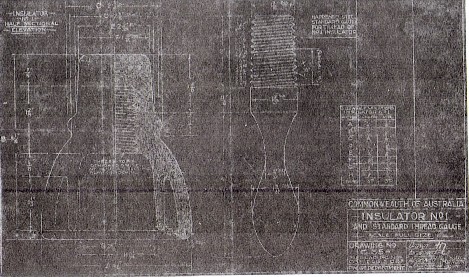
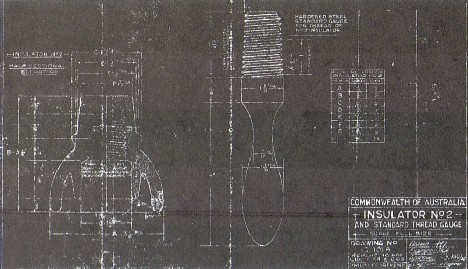
That reply, partly provincial but also partly pragmatic, nevertheless did not
convince the Commonwealth of Australia to change their standards.
Wood models of both insulator styles were sent out in October 1928, along
with an estimate to produce 200 insulators in each style. There, the document
trail ends, and it cannot be determined if these insulators were produced. If
they exist, I would consider them to be perfect examples of a foreign hybrid.
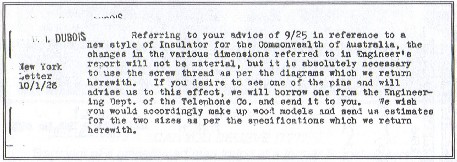
A quarter of a century later, we find Whitall Tatum's successor, Armstrong,
altering the thread cavity of their CD 128 CSC insulator to accommodate the
requirements of the Egyptian State Railway. The blueprint on the next page is
the only document to surface in regard to these specialized CSC insulators, but
it is quite informative. Notably, plant standards dictate that the notation
"Record" on the print means that this screw peg was actually machined.
The exact dimensions achieved in the fabrication process have been physically
checked off on the record copy. We cannot infer from screw peg existence that
insulators were successfully produced, but if they were, I feel they present yet
another example of a foreign hybrid. Millville glass documentation is not and
cannot be the sole focus of a hybridized foreign insulator theory. Witness this fragment of a
Brookfield-produced gingerbread man found by Dave Wiecek at the site of the
former Brookfield factory. It features a non-North American thread pitch.
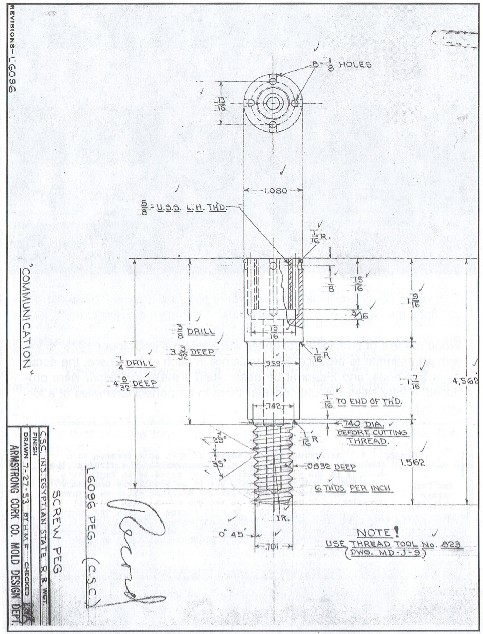
More
recently at the Brookfield site, David Sztramski unearthed a small cache of CD
152 Brookfield units with an Australian thread pitch. Both of these discoveries
were almost certainly intended for use outside of this country, and are clearly
unusable here. Two more solid candidates to place into a foreign hybrid
category? I'll let you be the judge.
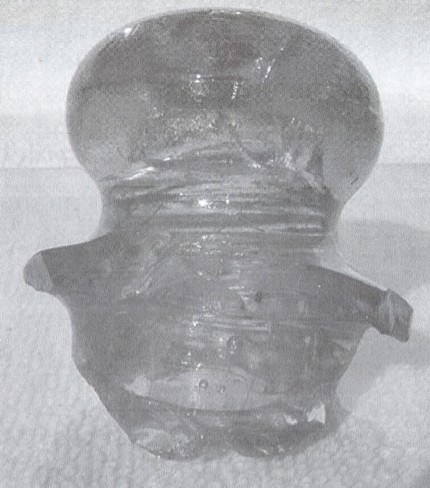
CAN YOU BELIEVE IT???
Fragment of a gingerbread man found at a former
Brookfield factory
| 